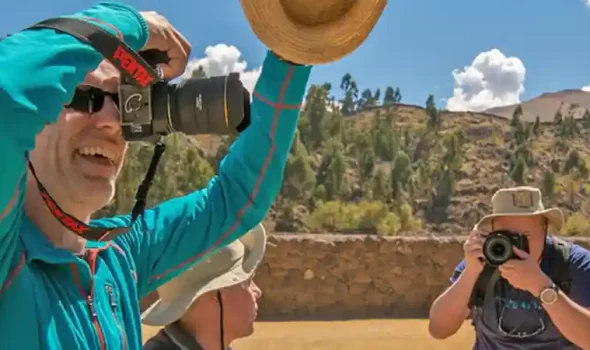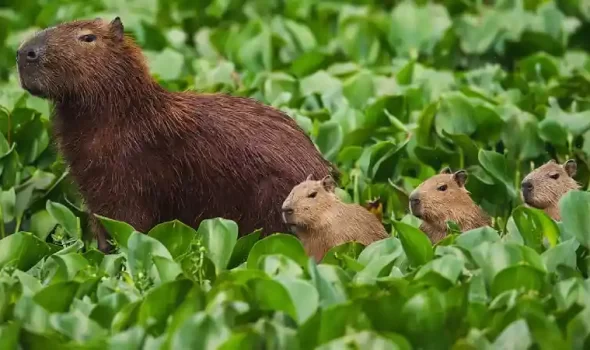Corpus Christi Cusco Peru is a great religious tradition that is lived in the city of Cusco and has a fantastic story of its importance. AURI PERÚ tells you a little more about how this celebration takes place, how many days it lasts and all about why It is an ideal experience to visit during your stay in Peru.

Corpus Christi Cusco
HISTORY OF CORPUS CHRISTI
Although it is based on religious ideas, the celebration of Corpus Christi Cusco Peru is also a cultural and historical tradition that has occurred every year in Cusco for the last 450 years. It dates back to the time of Tawantinsuyo, in which the Andean settlers honored their Inca ancestors and their gods with a procession in which they carried their mallquis or mummies who were important people within the family. Naturally this changes with the arrival of the Spanish conquerors who in their attempt to evangelize the Andean inhabitants, establish that this festival be modified by the worship of saints in the city under the name of Corpus Christi, which means body of Christ. However, it did not go as well as expected since the local people hid their Mallquis under the saints, giving no indication of this act of rebellion. In this way, the traditional Corpus Christi Festival Cusco began to be celebrated in Cusco. It is currently known that Corpus Christi Cusco Peru is one of the oldest festivities on the entire continent of America.
It is known that in its most glamorous time, the Corpus Christi Cusco Peru had the visit of more than 100 saints from the entire region, including the Virgin of Copacabana, which is located in Bolivia. As time went by, this was restricted and at this time, 15 main saints left, which are the most representatives of the districts of Cusco and around.

Corpus Christi Celebration
HOW DO THE PEOPLE CELEBRATE CORPUS CHRISTI IN CUSCO
The Corpus Christi Cusco procession will begin on Thursday, May 30th, each saint leaves their respective church and heads to the main square of Cusco in the company of all their faithful followers in a procession with music and dance, for this each district previously organizes everything for their participation and in some cases it becomes a competition since some of the districts have a certain rivalry. The celebration of Corpus Christi Cusco Peru is so great and it was declared Cultural Heritage of Peru in 2006.
Something that not many people know about this festival is that the saints have a specific order of arrival to the main square. If for any reason a saint arrives before the assigned turn, it is necessary to wait and respect the order. they have a specific order of entry to the cathedral, which is the following:
- San Antonio
- San Jerónimo – district of San Jerónimo.
- San Cristóbal – neighborhood of San Cristóbal.
- San Sebastián – district of San Sebastián.
- Santa Bárbara – district of Poroy.
- Santa Ana – neighborhood of Santa Ana
- Santiago – district of Santiago.
- San Blas – neighborhood of San Blas
- San Pedro – district of San Pedro
- San José – district of Belén
- Nuestra Señora de la Natividad – district of Almudena
- Virgen de los Remedios – church of Santa Catalina
- Virgen Purificada – district of San Pedro
- Virgen de Belén – district of Belén
- Inmaculada Concepción o La Linda – Basilic of the Cathedral.

San Cristobal Corpus Christi
When everyone is finally gathered in the cathedral of Cusco the doors are closed and they stay for 8 days, during this time it is said that they establish a meeting in which each saint tells and relates how their year has gone if their faithful believers have been devout or on the contrary if they have made mistakes, all this directed towards the patron saint who leads the meeting, El señor de los temblores (The Lord of earthquake), he is the one who, after listening to each one, makes the decision to punish the city for an evil behavior or on the contrary if it is necessary to reward them in some way, it is also said that here there is a slight conversation at the time of making the decision since if their decision is to punish the city it is the Virgin of Belen, the mother of all Cusco people, who intercedes for us and defends us by saying that we do not do things with bad intentions. We can see the result of this conversation after the eighth day when the Virgin of Belen finally leaves the cathedral, we see that her face has a reddish color as if excited, which represents that it will be a good year for the entire city, however, on the contrary, if the face looks pale and colorless, it is because somehow the pleas to the son were not heard and we will have to face a difficult year.
This is clearly part of the Cusco folklore that refers to the beliefs and part of the Andean cosmogony, it is always linked to the beliefs of each of its inhabitants. Finally, on the eighth day, each saint returns to his district in the same way in the company of a procession full of music, dance and joy until reaching his church where the parishioners and faithful previously coordinating have organized a welcome that can last up to a couple of days, without a doubt it is a tradition that has not diminished in the slightest over the years but has been reinforced and made much more important among all the people of the city and also the visitors who can participate in the festivities.

Saints at Corpus Christi
Something important that we must mention is that the saints are not at all light, but on the contrary, a considerable number of 20 to 22 people are required to be able to lift them and carry them in procession. There are some cases, such as San Sebastian Saint, where their bearers go barefoot and this due to a tradition that goes back many years in which they lost the competition to reach the parade ground first in front of San Jerónimo, and other cases such as San Cristóbal Saint, who is considered the heaviest saint due to his incredible size . Clearly this would not be possible without preparation, that is why every year there is someone responsible for this coordination for the celebration of the saint, he is known as a mayordomo or CARGUYOQ in the Quechua language, he is tz|he one who will be in charge of making the entire organization until the last moment where the new mayordomo is chosen for the year 2025.

San Jeronimo Corpus Cusco
CORPUS CHRISTI FOOD
Cusco, being a multicultural place, contains many traditions, this also applies to food and gastronomy, which is why it is so difficult to identify what the main dish of Cusco is. However, the truth is that this dish does exist and it is precisely the one that we enjoy during the festivities of Corpus Christi Cusco Peru, the Chiriuchu, a word in Quechua that makes us understand that it is a cold and spicy dish to satisfy all palates.
It is a mixture of 10 ingredients such as baked guinea pig, it also contains a generous amount of fish roe, a piece of boiled chicken, cured meat or dried meat, seaweed also called cochayuyo, handmade chorizo or blood sausage, toasted white corn, a large piece of cheese, sliced red pepper, red chili and the typical torreja, which is also yellow and very spongy, is the combination of some ingredients such as; pumpkin, corn and chicken broth to give it a characteristic flavor.

Chiriuchu Dish
GREAT UNFORGETTABLE CULTURAL EXPERIENCE
For foreigners and visitors to the city of Cusco, Corpus Christi is an excellent introduction to Andean culture, since it greatly highlights its history and shows the culture interwoven between the typical music and typical dances of the region with its colorful handmade costumes and its extravagant Andean accessories.

Dances at Corpus Christi Cusco
San Francisco square, which is the square near the Main Square, becomes the main place for those looking for gastronomic delights. It is here mainly where you can find Chiriuchu in the Corpus Christi festival Cusco and the San Pedro market also sells seasonal fruits such as custard apple and sugar cane, which is only produced in that season during the week of Corpus Christi Cusco.
During this time the doors of the Basilic of the Cathedral remain open for the public to visit the saints and appreciate their extravagant, handmade and luxurious clothing. Now you can live that experience in 2024, Auri Perú accompanies you in every moment of your experience, don’t think about it so much and contact us now.
“I’m in love with cities I’ve never been to and people I’ve never met.”



















